INTERNACIONAL
El papa León XIV canonizará este domingo a Carlo Acutis, el primer santo de la generación millennial

Este domingo, la Iglesia Católica celebrará un hecho histórico con la canonización de Carlo Acutis, considerado el primer santo de la generación millennial. La ceremonia tendrá lugar en la Plaza de San Pedro y será presidida por el papa León XIV, con la participación de decenas de miles de fieles provenientes de todo el mundo. Durante el acto, también será canonizado Pier Giorgio Frassati, un joven italiano fallecido en 1925 a causa de poliomielitis.
El evento está programado para comenzar a las 10:00 (hora local), con la tradicional fórmula en latín que inscribirá a los jóvenes en el libro de los santos y permitirá el inicio de su veneración universal. Se espera una celebración multitudinaria, especialmente de jóvenes católicos, consolidando el legado de Carlo Acutis como un modelo de santidad que combina espiritualidad, compromiso social y uso positivo de la tecnología en la fe.
Acutis nació en Londres el 3 de mayo de 1991 y falleció en 2006 a los 15 años debido a leucemia fulminante. Fue beatificado en octubre de 2020 por el papa Francisco, quien había previsto canonizarlo durante el Jubileo de los Adolescentes, pero su muerte postergó la ceremonia.
“Carlo era un niño normal y corriente como los demás. Jugaba, tenía amigos e iba al colegio. Pero su cualidad extraordinaria era que abrió la puerta de su corazón a Jesús y le dio prioridad”, expresó su madre, Antonia Salzano, en una entrevista con Reuters.
Acutis creció en Milán, Italia, donde cursó sus estudios y recibió la Primera Comunión a los siete años. Desde entonces, la misa diaria, el rezo del rosario y la adoración eucarística formaron parte de su rutina. Aunque disfrutaba de videojuegos, excursiones y la compañía de amigos, Carlo se destacó por su compromiso con la fe y con los más necesitados. Participó como catequista en su parroquia, ayudó en comedores populares y apoyó a personas en situación de calle.
Su pasión por la informática lo llevó a crear sitios web para su colegio y su parroquia, además de diseñar una exposición digital de más de 100 milagros eucarísticos reconocidos por la Iglesia. Este proyecto, aún disponible en línea, fue considerado un aporte innovador para la evangelización en la era digital, lo que le valió el apodo de “influencer de Dios” o “ciberapóstol”.
El Vaticano le atribuyó dos milagros: la curación de un niño en Brasil y la recuperación total de una adolescente costarricense tras un grave accidente. Estos hechos fueron determinantes para la aprobación de su canonización.
Su tumba se encuentra en el Santuario de la Spogliazione, en Asís, donde cada año cientos de miles de peregrinos visitan el lugar. “Carlo es recordado por su amor a la Eucaristía, su sensibilidad con los pobres y su uso de la tecnología al servicio de la fe”, señaló Vatican News.
Durante la ceremonia, el papa León XIV también canonizará a Pier Giorgio Frassati, hijo del fundador del diario La Stampa. Frassati se dedicó a ayudar a los pobres, practicó el alpinismo y resumía su ideal en el lema “Verso l’alto”.
Falleció a los 24 años y fue beatificado por Juan Pablo II en 1990. A finales de 2024 se reconoció un segundo milagro, la inexplicable curación de un joven estadounidense en coma, lo que permitió su canonización.
La canonización de Acutis y Frassati busca acercar la Iglesia a las nuevas generaciones. “Este santo es increíble, y además tan joven. Podemos presentarlo como ejemplo para nuestra gente, porque todos estamos llamados a la santidad”, afirmó el padre Jacinto Bento, sacerdote portugués que peregrinó a Asís.
El papa León XIV subrayó que estas figuras representan “santos de la calle”, cercanos a la vida cotidiana y capaces de inspirar a jóvenes contemporáneos.
En escuelas y parroquias católicas de todo el mundo, como la parroquia Beato Carlo Acutis en Chicago, los estudiantes participan de talleres y recrean escenas de la vida de Carlo. Dibujan objetos que él podría haber usado, como una computadora, un balón de fútbol o un rosario, mientras conversan sobre los milagros atribuidos a su intercesión.
“Cuando leí su historia por primera vez, fue simplemente impactante para mí, porque desde muy joven, él estaba realmente atraído por Jesucristo y asistía a misa todo el tiempo”, dijo Sona Harrison, estudiante de octavo grado.
(Con información de EFE y AP)
Europe,Religion / Belief,VATICAN
INTERNACIONAL
Australian mother calls for social media age restrictions after daughter’s suicide

NEWYou can now listen to Fox News articles!
A Sydney mother, whose 15-year-old daughter, Matilda «Tilly» Rosewarne, took her life after severe social media cyberbullying, called for global reform Wednesday at an event on the sidelines of the United Nations General Assembly in New York – banning children under 16 and holding tech companies financially accountable.
In a heartbreaking speech, Emma Mason detailed her daughter’s final moments, as she attempted to take her life for the twelfth and final time on Feb. 16, 2022.
«My brave little girl, determined to look pretty, put on her makeup one last time,» Mason said. «She had planned this moment out in detail. … Exhausted and broken, she just couldn’t fight anymore. She climbed on top of the backyard tree house, she slipped the noose around her neck, and stepped off into whatever experience eventually awaits all of us.»
Tilly was found by her father and 13-year-old sister, who ran into the backyard alone to find her big sister lifeless.
MELANIA TRUMP DECLARES ‘THE MOMENT IS NOW’ FOR NEW GLOBAL CHILDREN’S INITIATIVE AT UN
Emma Mason speaks at a Wednesday event on the sidelines of the UN General Assembly in New York after her 15-year-old daughter, who was bullied on social media, committed suicide. (EUDebates.TV)
While Tilly faced relentless bullying that began in elementary school, Mason said it worsened with the spread of social media.
In November 2020, a fake nude photo of Tilly – created by a male classmate – circulated on Snapchat, reaching more than 3,000 children within just a few hours.
«The reality of this harm was instant,» Mason said. «Tilly was hysterical and spiraling. I rang the school but because this boy, and his mother, denied he’d even had his phone that day, they said they couldn’t do anything. That night, Tilly attempted suicide by cutting her arms and there was a lot of blood. … She never really recovered.»
MAMDANI SLAMMED FOR USING KIDS IN CAMPAIGN VIDEOS AFTER GLOATING ABOUT SOCIAL MEDIA-FREE CHILDHOOD
Authorities allegedly told the family it was difficult to «stop this from happening,» explaining they are forced to wait months for information from Snapchat.
As Tilly lost herself in depression, Mason said the bullying continued, with Tilly receiving numerous messages urging her to kill herself.
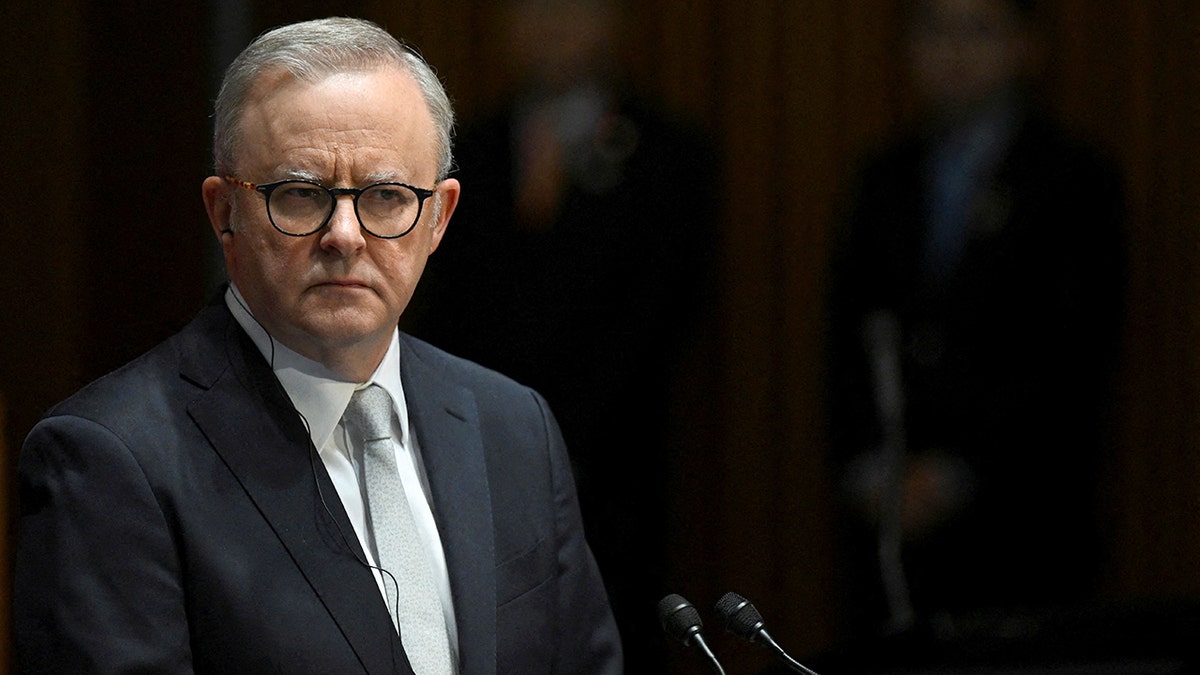
Australian Prime Minister Anthony Albanese also touted the country’s social media law at the United Nations this week. (Lukas Coch/Pool via REUTERS/File Photo)
The grieving mother said Snapchat, Instagram, Facebook and TikTok played a direct role in her daughter’s death, noting the apps fail to protect young users and contribute to a decline in mental health, concentration, social skills, negative effects on body image, sleep and social isolation.
META ADDS TEEN SAFETY FEATURES TO INSTAGRAM, FACEBOOK
«In the same way car manufacturers are responsible for protecting those who drive their vehicles, social media giants must take responsibility for protecting our children, because across the globe, children are suffering,» she said. «They’re dying as a direct result of their social media engagement, and as parents, we need help.»
Snap Inc.’s head of public policy Henry Turnbull in the Asia-Pacific region told a parliamentary inquiry in 2024 that the company works to ensure users feel safe on Snapchat, NewsWire reported at the time.
«This work is never done,» Turnbull said. «Bullying is unfortunately something that takes place in the real world and online. We do work hard to address it, and I recognize how damaging and devastating it can be to those affected. From our perspective, it’s about focusing on the actions we’re taking to address these risks.»
During the 2024 inquiry, Lucinda Longcroft, at the time Google’s director of government affairs and public policy for Australia and New Zealand, said user safety remains the company’s highest priority.
«We are certainly open to exploring any avenue to ensure the safety of Australian users,» Longcroftsaid. «We never feel we are doing enough to exercise our responsibility. We are constantly working, because the safety of children – as the most vulnerable among our users – and the safety of all our users is of utmost concern and our responsibility. We invest time, resources and expertise to ensure our systems, services and products are safe in the area of mental health and suicide.»
Though Australia recently passed a landmark minimum-age law, forcing social media platforms to take reasonable steps to prevent Australians under 16 years old from having accounts or pay millions of dollars in fines, Mason asked the world to adopt a global ban to hold tech companies financially accountable.
«For parents of lost children, our lives are measured in days, weeks and months from our loss,» she said. «By birthdays, anniversaries, Christmases and other events that serve to remind us of life moving on for everyone else, except us. … Since Tilly died, I’ve sadly had the privilege of meeting so many parents like me … How many more Tillys must die?»
MOTHER OF DAUGHTER MURDERED BY MS-13 GANG MEMBER SPEAKS OUT IN FAVOR OF NEW BILL
European Commission President Ursula von der Leyen followed Mason’s speech, accusing apps of attracting and addicting children to manipulative algorithms that are geared to return profits to tech companies.
«This business is not for charity, but parents live with the risks and harms of this every single day,» von der Leyen said. «Cyberbullying, the encouragement of self-harm, online predators, addictive algorithms. It is up to us to step up for the next generation.»
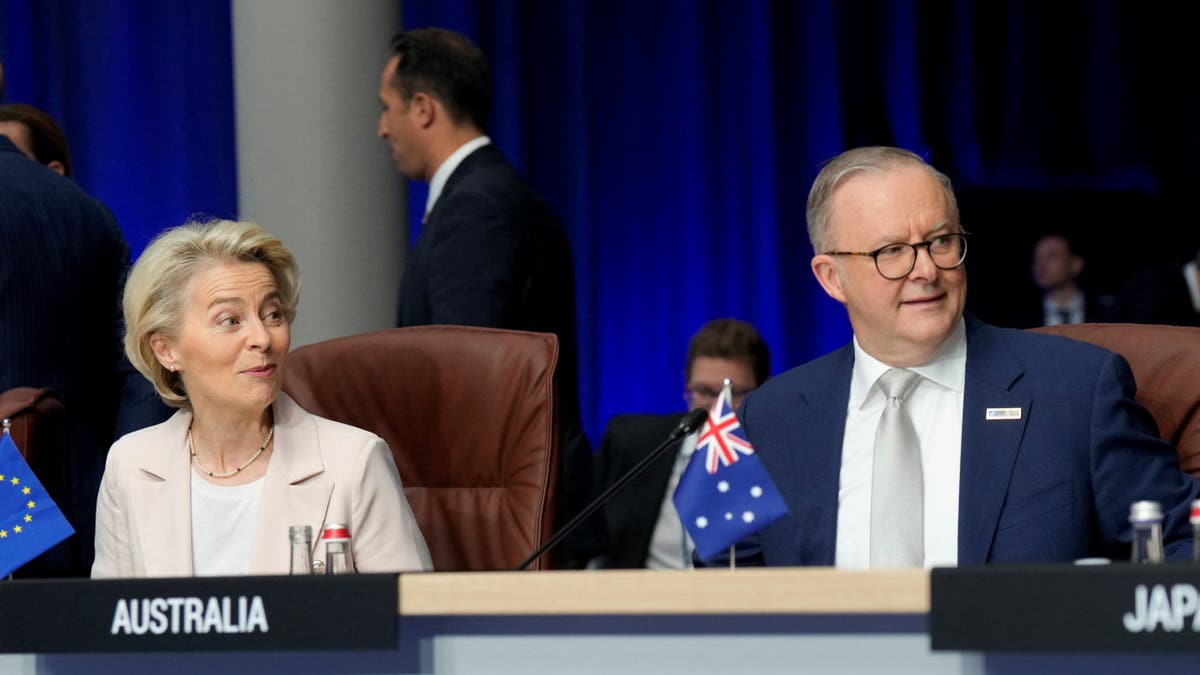
European Commission President Ursula von der Leyen and Australian Prime Minister Anthony Albanese were seen together during a NATO leaders summit in Lithuania, July 12, 2023. (REUTERS/Ints Kalnins)
CLICK HERE TO GET THE FOX NEWS APP
In Europe, she said an age verification prototype is being tested in France, Spain, Greece, Denmark and Italy.
«It is obvious that this is plain common sense,» von der Leyen said. «We all agree that young people should reach a certain age before they smoke, drink or have access to adult content. The same can be said for social media. … We have no reason to fear the future. The technological revolution has already brought huge benefits to our lives and will bring more. But we can clarify our relationship with tech so that it serves us and not the other way around.»
tech,australia,big tech backlash,technology,facebook,instagram
INTERNACIONAL
Cómo el pescado seco evolucionó de plato tradicional a superalimento, según la ciencia
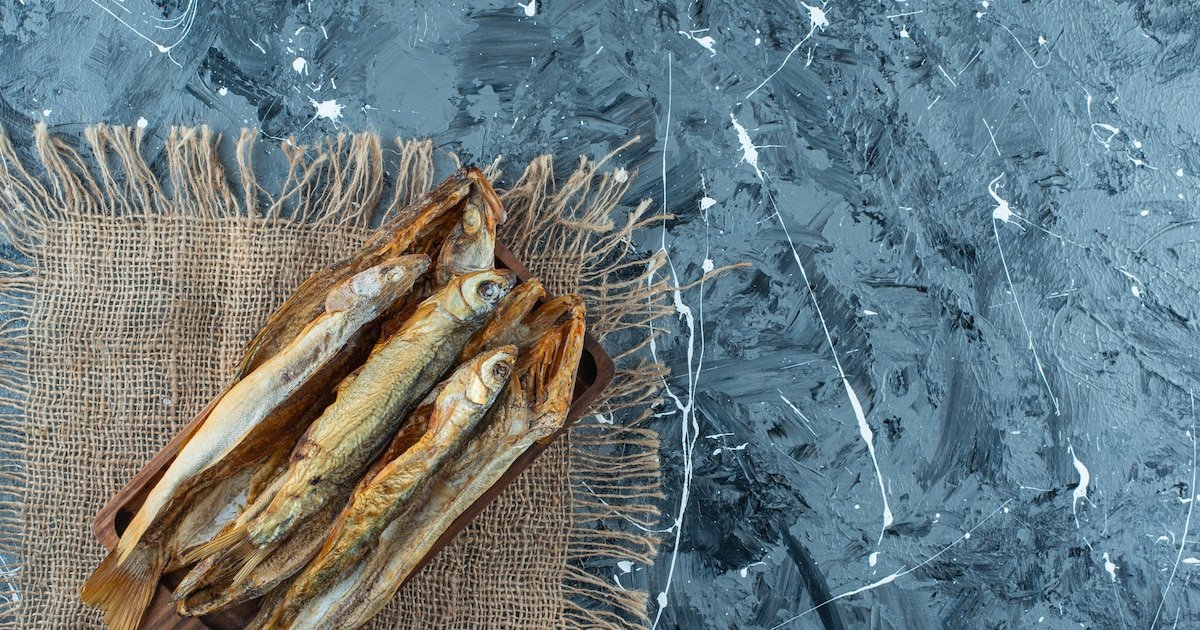
El pescado seco se ha consolidado durante generaciones como un alimento tradicional y práctico en numerosos mercados del mundo. Considerado durante mucho tiempo una solución eficaz para la conservación y el comercio, nuevas investigaciones científicas revelan que su valor trasciende la simple durabilidad: representa una de las fuentes alimentarias más concentradas de nutrientes esenciales, con impacto directo en la salud de mujeres y niños, en este caso, en África.
El reconocimiento del pescado seco como aliado nutricional proviene, en gran medida, de un reciente estudio liderado por la Universidad de Lancaster y publicado en Proceedings of the National Academy of Sciences (PNAS). La investigación relevó los hábitos de consumo en miles de hogares de países como Costa de Marfil, Ghana, Nigeria, Malawi, Tanzania y Uganda, y analizó cómo este alimento cubre las necesidades de los grupos más vulnerables.
Uno de los hallazgos principales muestra que los métodos de secado al sol o ahumado no solo permiten conservar el pescado durante meses, sino que aumentan notablemente la densidad de minerales y vitaminas en pequeñas raciones fáciles de almacenar. Por unidad equivalente, el pescado seco puede superar al fresco en calcio, hierro, zinc, yodo, selenio, y vitaminas B12 y D.

La investigación estableció que hasta un tercio de los hogares de algunos países africanos consume pescado seco al menos una vez a la semana, cubriendo en ese acto más del 15% de la cuota diaria de nutrientes esenciales. Esto convierte al producto en un recurso indispensable.
James Robinson, responsable del equipo científico, enfatizó: “El valor del pescado seco ha sido infravalorado en la medicina y la nutrición pública. No solo es proteína, sino una fuente segura de minerales y vitaminas en contextos de vulnerabilidad.”
El estudio abarcó 19 especies distintas —de agua dulce, marinas y costeras—, resaltando que el método de procesado influye directamente en el contenido nutricional final.
Las especies marinas en polvo o ahumadas, por ejemplo, suelen ofrecer mayores concentraciones de hierro y omega-3, mientras que variedades de agua dulce como la sardina del lago Victoria destacan por su aporte de calcio y zinc.

Esta diversidad convierte al pescado seco en un alimento adaptable: su presentación en piezas, tiras o polvo facilita su incorporación en sopas, guisos, harinas, papillas infantiles y mezclas para enriquecer platos cotidianos. La multiplicidad de formatos lo vuelve una herramienta eficaz para mejorar la oferta nutricional sin modificar los hábitos alimentarios ni aumentar los costos.
El pescado seco tiene una notable huella ambiental reducida frente a la producción de otras fuentes animales. Al requerir poca energía para su preservación y almacenamiento, y depender de técnicas ancladas en saberes tradicionales, representa una alternativa eficiente y compatible con prácticas alimentarias sostenibles. Su bajo desperdicio durante la preparación y la posibilidad de aprovechar piezas enteras refuerzan su valor ecológico y económico.
A pesar de la robusta evidencia científica, el pescado seco no suele figurar en políticas públicas ni en recomendaciones dietéticas formales. La razón principal es la falta de datos analíticos uniformes sobre su composición, lo que dificulta su integración en las tablas oficiales, explicó Marian Kjellevold, del Institute of Marine Research. No obstante, trabajos como el publicado en PNAS comienzan a subsanar esta carencia y habilitan su consideración en estrategias de salud pública.

Shakuntala Thilsted, referente en nutrición, advirtió que el pescado seco tiene potencial para incorporarse en programas escolares, asistencia alimentaria y dietas destinadas a la infancia, además de constituir una solución efectiva contra las deficiencias de micronutrientes en diferentes segmentos de la población. El bajo costo, la estabilidad durante el almacenamiento y la ausencia de requerimientos logísticos complejos otorgan al pescado seco ventajas únicas.
El perfil nutricional del pescado seco lo distingue dentro del universo alimentario. Su resistencia al paso del tiempo, la facilidad de almacenamiento y transporte, y la flexibilidad en la cocina lo posicionan como un recurso vital donde las cadenas de frío no llegan o los presupuestos son ajustados.
Además, reúne atributos que lo convierten, con evidencia científica y experiencia comunitaria, en un auténtico superalimento: asequible, completo, adaptable y fundamental para combatir las deficiencias nutricionales.
La revalorización del pescado seco implica mucho más que rescatar un alimento tradicional. Significa incorporar una solución silenciosa pero poderosa para reducir las brechas de micronutrientes y elevar los estándares de salud colectiva.
appetizing,board,cooked,delectable,delicious,fish,flavorful,grilled,roasted,tasty,texture,toothsome,pescado seco,baked,cuisine,dried fish,fresh,fried,kilka,meal,oil,omega,salt,seafood,wooden plate
INTERNACIONAL
Reporter’s Notebook: Government shutdown chances astronomical as Congress barrels toward deadline
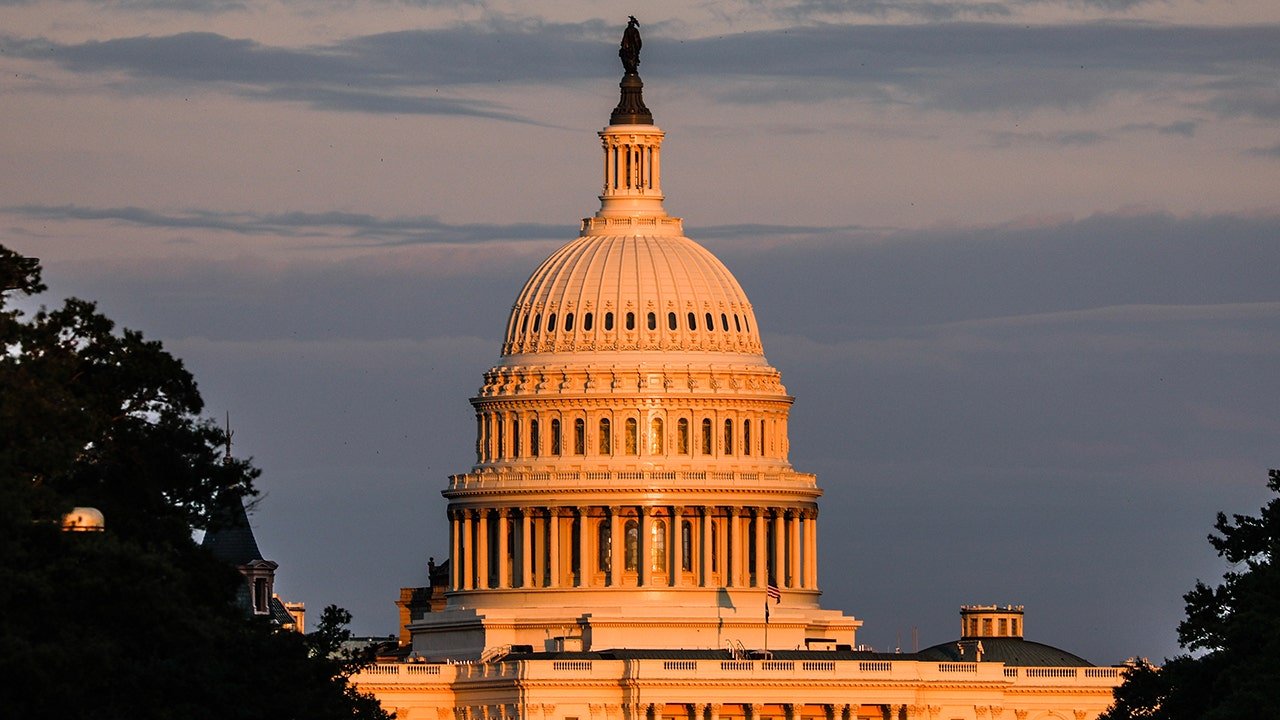
NEWYou can now listen to Fox News articles!
A «government shutdown» in the federal wild is a rare sight.
Oh, people talk a lot about government shutdowns. It’s kind of like spotting an elusive species while on safari in Africa. Maybe spying the Aurora Borealis during a trip to Quebec. Perhaps finding yourself in the «zone of totality» for a solar eclipse.
Many now toiling on Capitol Hill, serving in the federal government, working for the current Trump administration or as freshmen in Congress have never witnessed a government shutdown. You might not know exactly what to expect. After all, Congress and a presidential administration haven’t had a dalliance with a government shutdown since the 35-day closure in late 2018 and early 2019.
GARBAGE COLLECTION, TOURS TO BE SUSPENDED ON CAPITOL HILL IF THERE’S A GOVERNMENT SHUTDOWN
The U.S. Capitol Building is seen from Freedom Plaza on Sept. 7, 2025, in Washington, D.C. (Yasin Ozturk/Anadolu via Getty Images)
Every shutdown is different. It’s a near political certainty that the sides seize up periodically, compelling a government shutdown. Such was the case with the last one. President Donald Trump demanded money for his border wall. The same with the 16-day shutdown over repealing Obamacare in 2013. Or even with a couple of partial but significant shutdowns in late 1995, stretching into 1996, over cuts to health care and environmental spending.
Here’s what we know about past shutdowns:
Federal employees not deemed essential don’t go to work. The military and those in national security remain on the job. However, pay for everyone is in abeyance until the shutdown is settled. Anything not essential stops. National parks and museums usually close. However, the Postal Service continues to operate. Passport processing usually stops. Air traffic controllers continue to work.
But they aren’t paid until there’s a resolution. The government continues to pay Social Security and other retirement or health benefits, but there’s always the possibility that federal workers who process those checks could refuse to come to work if they’re not getting paid and a shutdown drags on.
REPORTER’S NOTEBOOK: TRUMP CANCELS MEETING WITH DEMOCRATS AS SHUTDOWN LOOMS
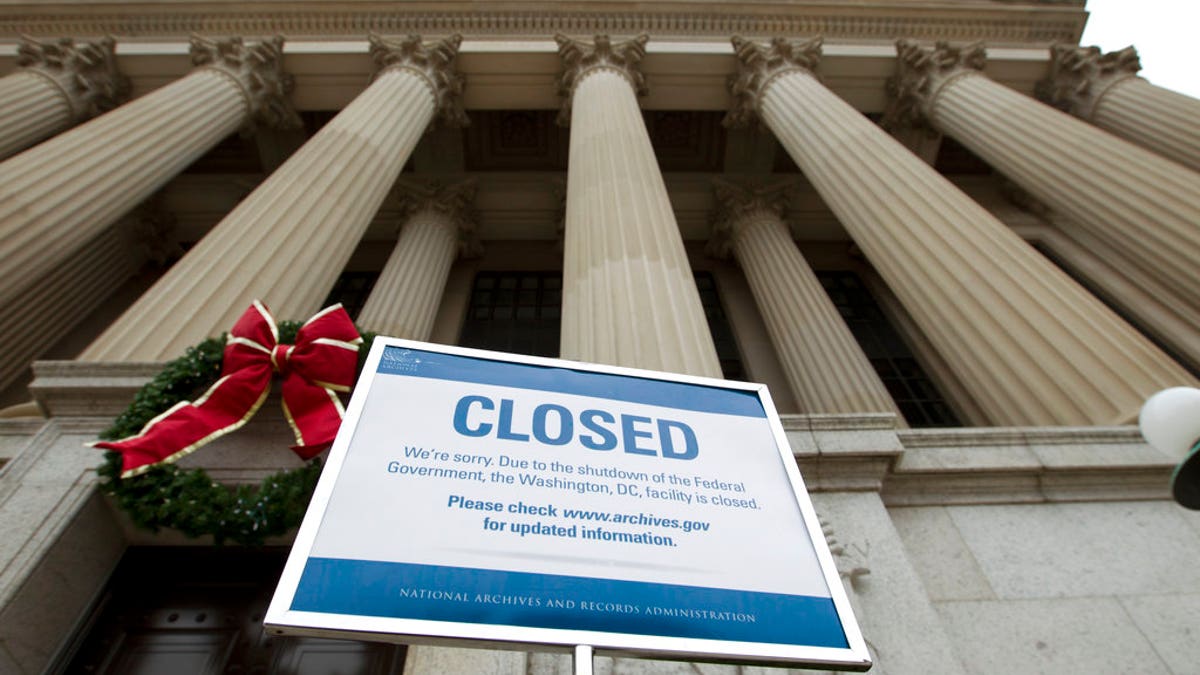
A closed sign is displayed at the National Archives entrance in Washington, Tuesday, Jan. 1, 2019, as a partial government shutdown stretched into its third week. (Jose Luis Magana/AP Photo)
There’s often a tipping point in each government shutdown that triggers the sides to lay down their political swords and forge an agreement. That returns everyone to work.
In 2013, U.S. Capitol Police officers were still on the job without pay when they got involved in a high-speed chase and shooting that started at the White House and wound up near the Hart Senate Office Building. Officers were injured in the mayhem. That prompted lawmakers from both sides to sober up and re-open the government.
Growing concern about aviation safety helped end a 2019 shutdown. Air traffic controllers worked for more than a month without pay. A small group of controllers elected to stay home. That prompted a temporary shutdown at LaGuardia Airport in New York. Issues also materialized in Newark, N.J., Atlanta and Philadelphia. Fear of a major air disaster prompted lawmakers and the first Trump administration to terminate the shutdown.
Congress is different from the rest of the federal government. That’s because Article I, Section 5 of the Constitution allows it to make its own rules. The House and Senate usually meet during a shutdown. But major committee hearings are often postponed. Lawmakers continue earning their paychecks. That’s because the 27th Amendment prohibits «varying the compensation» of lawmakers without an intervening election. Some lawmakers make a point of saying they won’t accept pay during a shutdown. They may try to defer their compensation or even donate it to charity.
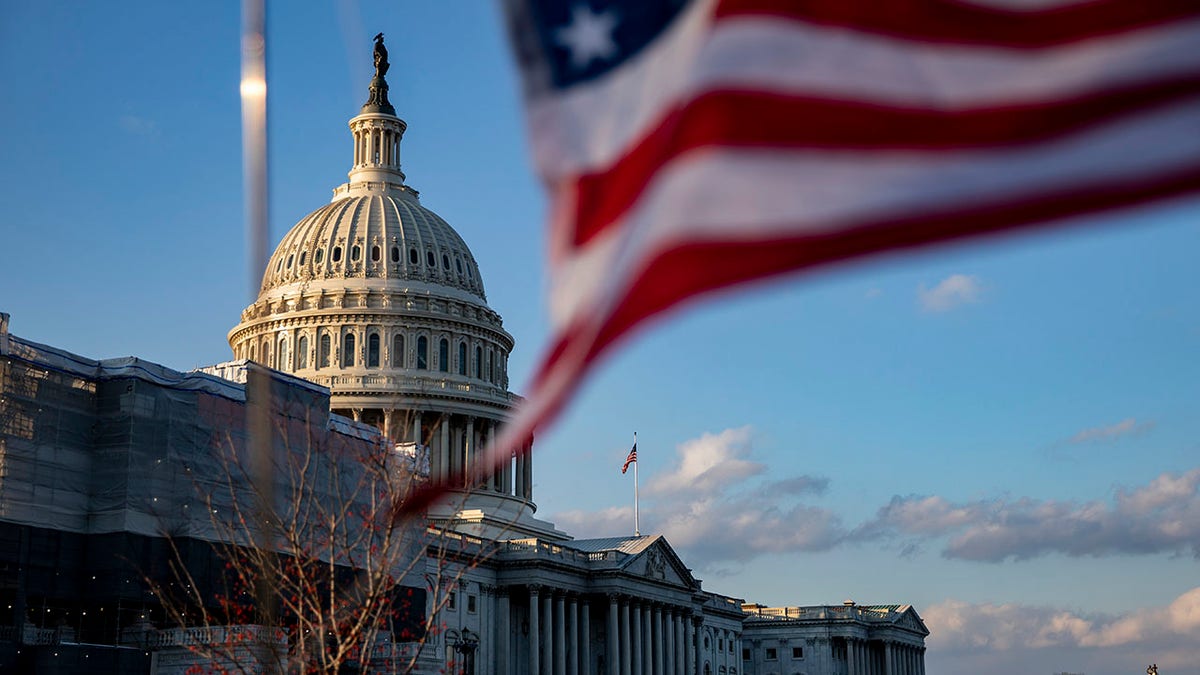
The U.S. Capitol building in Washington, D.C. with an American flag flying. (Samuel Corum/Getty Images)
Congressional staff are paid, but not until a shutdown is over.
Every House and Senate office operates like an independent entity within Congress. So lawmakers decide who must come to work and who doesn’t. Some lawmakers determine that only a top aide or two are «essential.» Others claim they represent 750,000 people in their congressional district. Therefore, all of their staffers are «essential.»
But the institution of Congress makes decisions about Capitol Hill operations.
U.S. Capitol Police stay on duty. But restaurants, cafeterias and barber shops close during a shutdown. Custodians are furloughed. That means garbage and trash around the Capitol isn’t collected. Formal tours of the Capitol are suspended. The flag office — which handles requests from constituents to fly flags atop the Capitol on behalf of school groups or veterans — is shuttered.
Who prevails in government shutdowns? It’s hard to gauge the political benefit. It’s widely believed that former President Bill Clinton won his standoff with former House Speaker Newt Gingrich, R-Ga., in 1995-1996. Clinton rode easily to reelection in the fall of 1996. Gingrich seemed to bleed support on Capitol Hill after the shutdown. But Gingrich secured significant spending reforms that ultimately resulted in a federal surplus a few years later. And Republicans maintained control of the House and Senate in 1996.
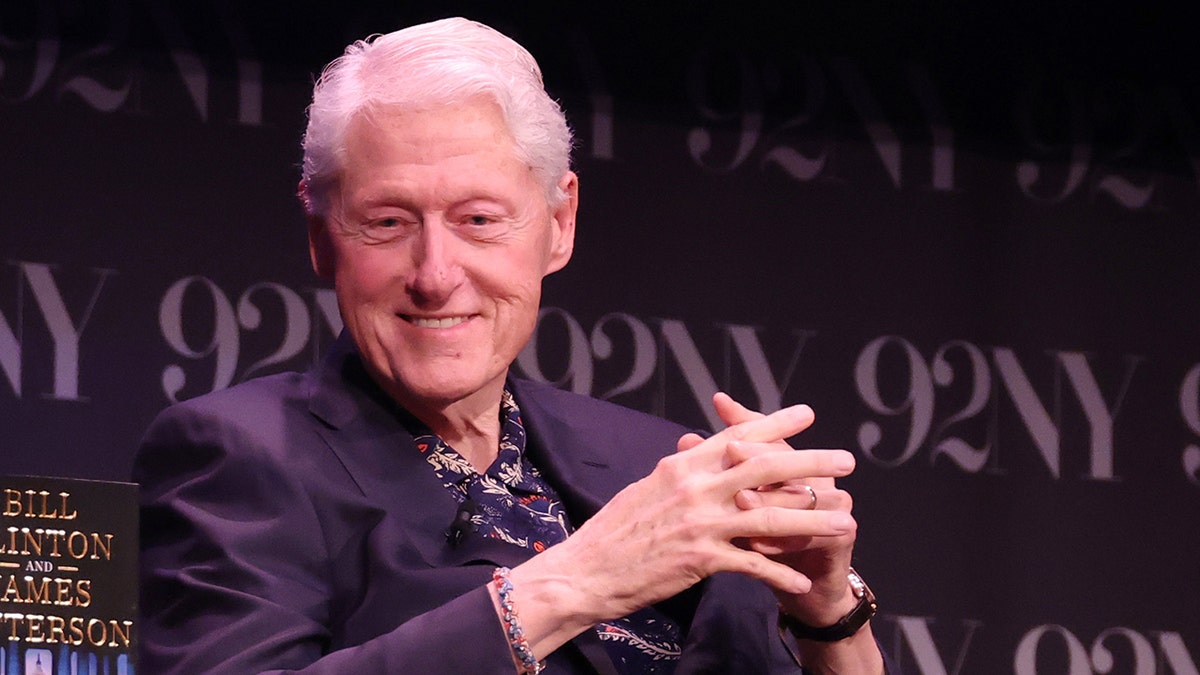
Bill Clinton attends «An Evening With President Bill Clinton And James Patterson: ‘The First Gentleman’» at 92NY on June 11, 2025, in New York City. (Rob Kim/Getty Images)
Sen. Ted Cruz, R-Texas, engineered the 2013 shutdown over repealing Obamacare. Obamacare remains the law of the land. Cruz won reelection in 2018. Democrats didn’t flip the House in the 2014 midterms as Republicans expanded their majority. And the GOP gained control of the Senate.
The 2018-2019 shutdown started even before the House and Senate swore in freshmen elected in the 2018 midterms. So divining a political impact from that particular shutdown is challenging. A host of other factors — including the COVID-19 pandemic — were much bigger than the shutdown by the time we got to November 2020. Trump lost reelection that year. Democrats maintained control of the House in 2020, and Democrats narrowly flipped the Senate.
But every shutdown is a little different. Has its own signature. A shutdown during Trump’s second term may be unlike any other shutdown we’ve seen.

A shutdown during Trump’s second term may be unlike any other shutdown we’ve seen. (Aaron Schwartz/CNP/Bloomberg via Getty Images)
White House Budget Director Russ Vought issued a memo this week, suggesting there may be mass firings if congressional appropriations lapse and those federal employees work on programs that don’t mesh with the Trump administration’s priorities.
Sen. Chris Van Hollen, D-Md., who represents tens of thousands of federal workers just outside Washington, D.C., characterized this as «mafia-style blackmail.»
«Do you view the OMB memo as a threat to get you guys to back down or a bluff?» yours truly asked House Minority Leader Hakeem Jeffries, D-N.Y.
«We will not be intimidated by Russ Vought, who is completely and totally out of control,» replied Jeffries. «Our response to Russ Vought is simple: Get lost.»
On X, Jeffries called Vought «a malignant political hack.»
At this stage, the sides aren’t even trading offers. Just barbs.
That’s why political observers believe that the chances of a shutdown next week are astronomical. Either Democrats really take it on the chin — and accept the GOP bill. Or Republicans cave.
«We’re not going to change our position. That’s our position,» said Sen. Bernie Moreno, R-Ohio.
Sen. John Fetterman, D-Pa., was the lone Democrat who supported the Republican plan last week in the Senate.
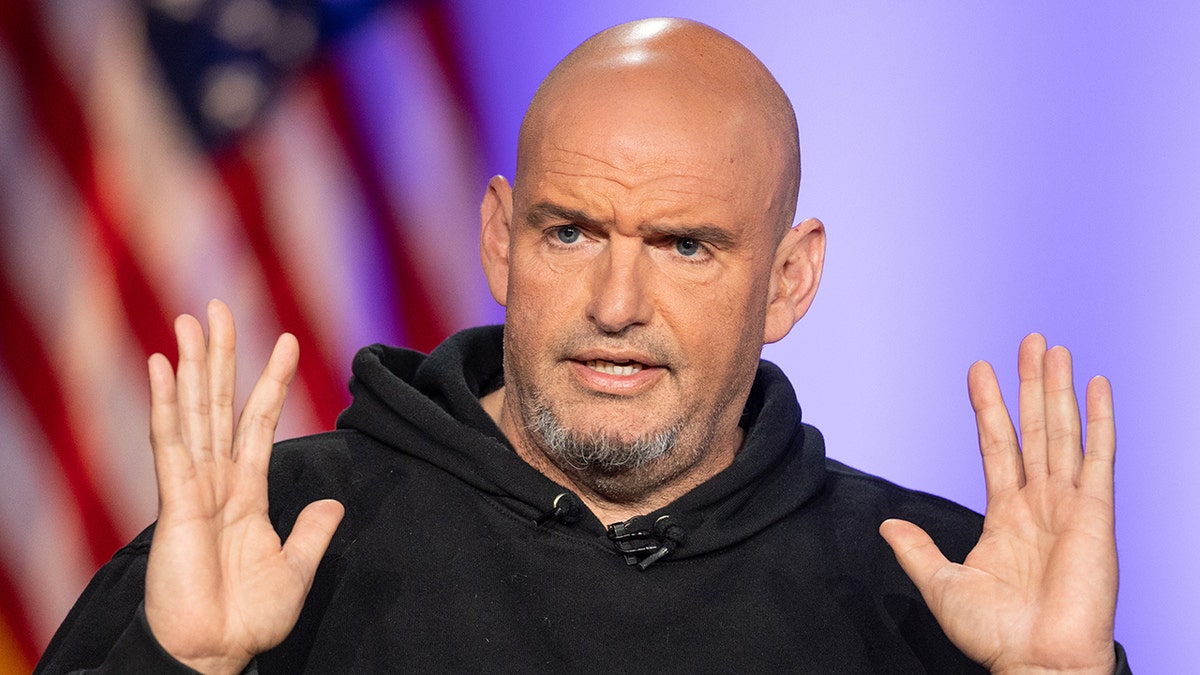
Sen. John Fetterman at the Edward M. Kennedy Institute for the United States Senate on June 2, 2025, in Boston. (Scott Eisen/Getty Images)
«If anyone believes that we’re on a rocket sled to autocracy, why would we hand a shuttered government over to President Trump or to Vought at OMB?» questioned Fetterman.
CLICK HERE TO GET THE FOX NEWS APP
In nature, it’s rare to spot an addax. An amur leopard. A red wolf.
Government shutdowns are rare as well. But you might spot a shutdown in the wild soon. And you may have even witnessed other government shutdowns before. But perhaps not a shutdown like this one.
politics,congress,house of representatives politics,senate

 SOCIEDAD2 días ago
SOCIEDAD2 días agoQuiénes son los cuatro detenidos por el triple femicidio de Florencio Varela

 POLITICA3 días ago
POLITICA3 días agoAlberto Fernández le respondió a Trump, luego de que lo comparara con Joe Biden: “¡Despertate, Donald!»

 ECONOMIA3 días ago
ECONOMIA3 días agoNo más cepo para freelancers, que podrán cobrar dólares del exterior sin límites


























